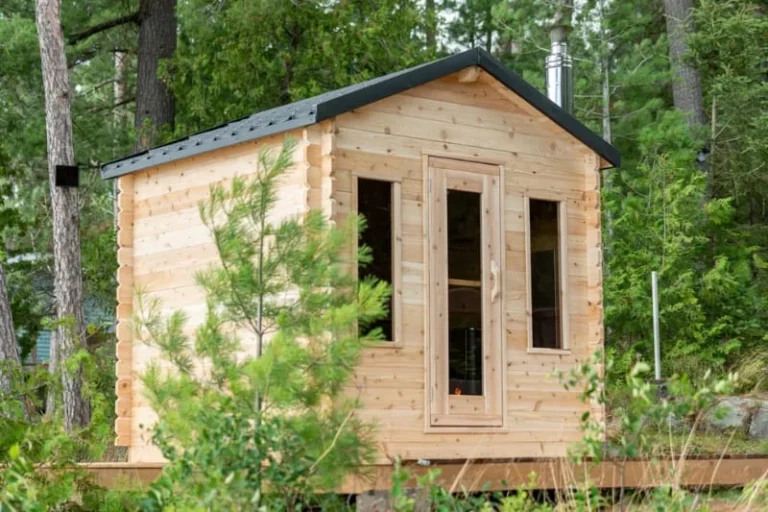Does Sauna Help with Allergies? Science Says ‘Yes’

Are you one of the 50 million Americans with allergies? If you’re tired of pills and sprays that don’t fully work, you might want to try something new.
Key Takeaways
- Saunas may help reduce allergy symptoms by improving nasal airflow
- Research shows regular sauna use can balance your nervous system
- Heat therapy can decrease swelling linked to allergic reactions
- Different sauna types (traditional, steam, infrared) help in unique ways
- A six-week sauna program showed real results in studies
Many people are turning to saunas for relief. But Does Sauna Help with Allergies?
In this article, we’ll look at the science behind heat therapy for allergies, explore how different sauna types benefit allergy sufferers, and share practical tips for using saunas to breathe easier.
Table of Contents
MEDICAL DISCLAIMER: The information provided in this article is for educational purposes only and is not intended as medical advice. Always consult with a qualified healthcare professional before starting any new health regimen, including the use of saunas.
How Allergies Work
Allergies happen when your body fights harmless things like pollen or dust. When these enter your body, your immune system makes antibodies that release histamine, causing those awful symptoms you hate.
The American College of Allergy reports that nearly one in three adults and one in four kids have allergic conditions. These can range from mild itching to serious breathing problems.
Common allergy signs include:
- Stuffy or runny nose
- Sneezing fits
- Itchy, watery eyes
- Scratchy throat
- Face pressure and headaches
What Happens in Your Body During a Sauna
When you sit in a sauna, your body changes in ways that might fight allergies:
1. Your body heats up: Higher body heat may help your immune system work better instead of overreacting.
2. Your blood flows better: Blood vessels open up, increasing flow and reducing swelling in your nose and airways.
3. You sweat more: Sweating might help flush allergens from your skin.
4. Your nervous system rebalances: Studies show saunas can fix the balance in your nervous system, which plays a big role in allergic reactions.
The Science Behind Saunas and Allergies
A study from Khon Kaen University tested saunas on people with allergic rhinitis. Their method was:
- Six weeks of sauna use
- Three times each week
- Six 5-minute sauna sessions each visit, with 5-minute breaks
- Heat kept at 80-90°C (176-194°F)
After six weeks, the sauna group showed big improvements:
- Better nose breathing: Their airflow measures jumped to 161.9 compared to just 103.0 in people who didn’t use saunas.
- Improved lung function: Their breathing capacity increased significantly.
- Better nervous system balance: The sauna fixed the imbalance that causes allergic reactions.
Which Sauna Type Works Best for Allergies?

Traditional Finnish Saunas
- Heat level: 65–90°C (150–195°F)
- Moisture: 10–20% dry, up to 60% with water on rocks
- How they work: Heat rocks that warm the air
- Allergy benefits: High heat opens airways and clears nasal passages
Steam Rooms
- Heat level: 43–49°C (110–120°F)
- Moisture: 100%
- How they work: Create mist by boiling water
- Allergy benefits: High moisture loosens mucus and soothes irritated airways
Infrared Saunas
- Heat level: 43–57°C (110–135°F)
- Moisture: Less than 20%
- How they work: Use infrared waves to heat your body directly
- Allergy benefits: Lower temps let you stay longer, and dry air helps those with mold allergies
Best Choice for Most Allergy Sufferers
Infrared saunas typically work best for most allergy sufferers because they’re more comfortable at lower temperatures (allowing longer sessions), and the dry air helps those with mold sensitivities. However, if your main problem is thick mucus, a steam room might give you faster relief.
Related Articles:
Three Ways Saunas Help Allergy Symptoms
1. Opening Blocked Airways
Heat opens your nasal passages, clearing stuffiness that makes breathing hard during allergy attacks. Scientists measured this effect and found that sauna users could move air through their noses much better.
2. Calming Your Overactive Immune System
Allergies happen when your nervous system overreacts to harmless things like pollen. Sauna sessions help fix this system.
After six weeks of sauna use, researchers saw:
- Better balance in the nervous system
- Less overreaction to allergens
- More normal immune responses
3. Reducing Swelling
Swelling is a key part of allergic reactions. Sauna heat may reduce this swelling by:
- Improving how blood vessels work
- Enhancing the cells that line your blood vessels
- Possibly lowering inflammation chemicals
How to Use Saunas for Allergy Relief
Want to try saunas for your allergies? Here’s how:
Getting Started
- Begin slowly: Start with 10-15 minute sessions
- How often: Try 2-3 sessions each week
- How long: Work up to 15-30 minutes per session
- Heat level: For traditional saunas, 70-80°C (158-176°F) works best
Stay Hydrated
Drinking enough water is vital:
- Drink 1-2 cups of water before your session
- Sip water during longer sessions
- Drink 1-2 cups after your session
- Consider sports drinks for sessions over 20 minutes
Safety Comes First
Saunas aren’t for everyone. Skip them if you have:
- High blood pressure
- Heart problems
- Multiple sclerosis
- Fever or infection
- Are pregnant
Using Saunas With Your Regular Allergy Treatments
Saunas work best alongside your usual allergy treatments, not as a replacement. Try these combos:
- Use saunas between doses of allergy pills for longer relief
- Try a sauna before rinsing your sinuses for better results
- Plan sessions on high pollen days when symptoms are worst
Heat and steam can help your nasal sprays work better by thinning mucus and opening passages.
Related: Sauna for Sinus
Final Thoughts
While we still need more studies, current research suggests regular sauna sessions may offer real relief for allergy sufferers. The mix of better airflow, reduced swelling, and calmer immune responses tackles several key allergy problems.
If you’re fighting allergies and want a natural addition to your treatment plan, try adding sauna sessions. The research showing improved breathing after a six-week program offers good evidence this approach might work for you.
Always check with your doctor before trying any new treatment, especially if you have health conditions. Give it a try – the science suggests you might find the relief you’ve been looking for!

“Become a Sauna Expert Overnight!”
Grab Your “FREE” Sauna E-book NOW!
Get your hands on the ultimate sauna manual. From history to DIY setups, our free guide has it all.

As a Chartered Accountant turned sauna enthusiast, I bring a unique blend of analytical skills and hands-on experience to the world of heat therapy. With over a decade dedicated to researching and testing sauna products and practices, I’ve developed a deep understanding of this field. A the founder of HomeInDepth.com, I provide reliable, easy-to-understand information on all aspects of saunas. My goal is to guide you through every step of your sauna journey, offering meticulously researched, unbiased advice to help you make informed decisions and create your perfect sauna experience. I’m always happy to hear from sauna lovers like you—feel free to leave questions or share your own tips in the comments below so we can learn together. Contact me on:






